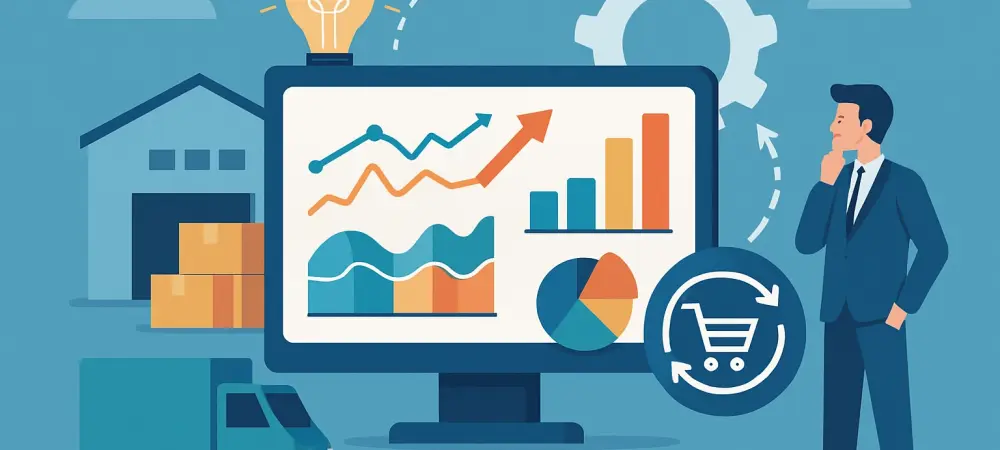In the ever-evolving world of supply chain management, staying ahead requires not just robust tools but also innovative solutions that anticipate challenges before they arise. Today, I’m thrilled to sit down with Dominic Jainy, an IT professional whose deep expertise in cutting-edge technologies has helped countless businesses optimize their operations. With a focus on integrating advanced planning tools with ERP systems like Microsoft Dynamics 365 Business Central, Dominic offers unique insights into how solutions like StockIQ are transforming supply chain planning for the better. In our conversation, we’ll explore the power of seamless integration, the real-world impact on inventory and forecasting, and why proactive planning is critical in today’s unpredictable market.
Can you start by telling us about StockIQ Technologies and how it enhances supply chain planning for businesses using Microsoft Dynamics 365 Business Central?
Absolutely, Maison. StockIQ Technologies is a specialized supply chain planning suite designed for distributors and manufacturers. It’s built to complement systems like Business Central by filling in the gaps where advanced planning is needed. While Business Central is fantastic for managing finances and basic inventory, StockIQ takes it further with tools like automated demand forecasting, inventory optimization across multiple locations, and dynamic replenishment planning. Essentially, it turns raw data into actionable insights, helping businesses predict needs and optimize resources in ways that the standard ERP might not cover.
How does StockIQ integrate with Business Central to streamline everyday operations for users?
The integration is one of the standout features. StockIQ connects directly with Business Central, pulling real-time data into its planning engine. This means there’s no need for manual data entry or exporting files back and forth, which saves a ton of time and reduces errors. Users get instant visibility into inventory levels, demand trends, and supplier metrics, allowing them to make faster, more informed decisions. It’s like having a live dashboard that’s always up to date, directly impacting procurement and operational efficiency.
What kind of tangible benefits have businesses experienced after combining StockIQ with Business Central?
The results are pretty impressive. Many companies see a 20 to 30% reduction in excess inventory, which is huge for freeing up capital and storage space. There’s also a noticeable drop in stockouts, meaning fewer missed sales, and forecast accuracy improves significantly. I’ve seen clients go from reacting to shortages to proactively planning for demand spikes. It’s not just numbers—it’s about reducing stress and building confidence in their supply chain decisions.
Can you share a specific example of a Business Central user who saw a major transformation with StockIQ?
Sure, I recall a mid-sized distributor who was struggling with overstock and frequent stockouts before integrating StockIQ. They were using Business Central but relied heavily on manual spreadsheets for planning, which was a mess. After implementing StockIQ, they automated their demand forecasting and optimized replenishment across warehouses. Within a few months, they cut excess inventory by nearly a quarter and almost eliminated stockouts. They described it as finally having a clear view of their supply chain, like putting on glasses for the first time.
Why do you believe advanced supply chain planning is so crucial for businesses in today’s environment?
Today’s supply chain landscape is incredibly volatile—think global disruptions, shifting consumer demands, and unexpected delays. Advanced planning isn’t just a nice-to-have; it’s a survival tool. Without it, businesses are stuck reacting to problems instead of preventing them. Tools like StockIQ help anticipate issues through data-driven insights, allowing companies to adjust before a small hiccup becomes a crisis. Relying solely on basic ERP features often leaves gaps in forecasting and optimization, which can be costly in terms of both money and customer trust.
How do specific features like supplier performance tracking in StockIQ make a difference for businesses?
Supplier performance tracking is a game-changer. It lets businesses monitor metrics like lead times and delivery reliability in detail. If a supplier consistently underperforms, you can spot it early and either address it with them or find alternatives before it disrupts your operations. This feature fosters better collaboration and accountability with vendors, ensuring that the supply chain isn’t just efficient on your end but across the entire network.
Can you explain how StockIQ’s event-based planning supports companies during special circumstances like promotions or market shifts?
Event-based planning is all about preparing for the unexpected or the planned spikes, like promotions or new product launches. StockIQ allows businesses to model these scenarios and adjust inventory or replenishment plans accordingly. For instance, if you’re running a big holiday sale, it can forecast the surge in demand and ensure you’re stocked without overdoing it. This prevents both shortages that frustrate customers and overstock that ties up resources. It’s about staying nimble and avoiding missed opportunities.
What is your forecast for the future of supply chain planning tools like StockIQ in the ERP ecosystem?
I see these tools becoming even more integral to ERP systems as businesses demand smarter, predictive capabilities. The future is about deeper integration with technologies like AI and machine learning to refine forecasting and decision-making further. I think we’ll see platforms like StockIQ not just complementing ERPs but becoming a core part of how companies strategize growth. As supply chains grow more complex, the need for real-time, data-driven planning will only intensify, and solutions that can adapt to that complexity will lead the way.

